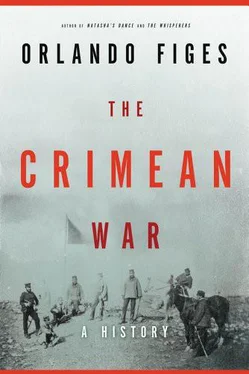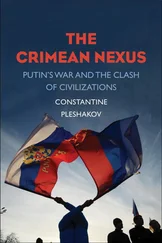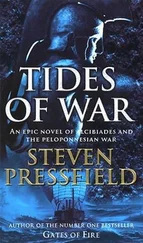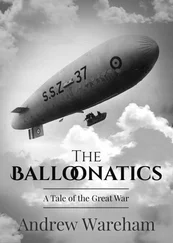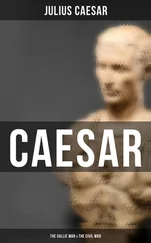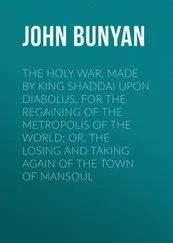The Tsar of Russia, Nicholas I, was bound to be excited by the discovery of these Byzantine mosaics. The church of Hagia Sophia was a focal point in the religious life of tsarist Russia – a civilization built upon the myth of Orthodox succession to the Byzantine Empire. Hagia Sophia was the Mother of the Russian Church, the historic link between Russia and the Orthodox world of the eastern Mediterranean and the Holy Lands. According to the Primary Chronicle , the first recorded history of Kievan Rus’, compiled by monks in the eleventh century, the Russians were originally inspired to convert to Christianity by the visual beauty of the church. Sent to various countries to search for the True Faith, the emissaries of the Grand Prince Vladimir reported of Hagia Sophia: ‘We knew not whether we were in heaven or on earth. For on earth there is not such splendour or such beauty, and we are at a loss how to describe it. We only know that God dwells there among them, and their service is fairer than the ceremonies of other nations. For we cannot forget that beauty.’ 3The reclamation of the church remained a persistent and fundamental aim of Russian nationalists and religious leaders throughout the nineteenth century. They dreamed of the conquest of Constantinople and its resurrection as the Russian capital (‘Tsargrad’) of an Orthodox empire stretching from Siberia to the Holy Lands. In the words of the Tsar’s leading missionary, Archimandrite Uspensky, who had led the ecclesiastical mission to Jerusalem in 1847, ‘Russia from eternity has been ordained to illuminate Asia and to unite the Slavs. There will be a union of all Slav races with Armenia, Syria, Arabia and Ethiopia, and they will praise God in Saint Sophia.’ 4
The Tsar rejected the Fossatis’ application for a grant to publish plans and drawings of the great Byzantine church and its mosaics. Although Nicholas expressed great interest in their work, this was not the time for a Russian ruler to get involved in the restoration of a mosque that was so central to the religious and political claims of the Ottoman Empire on the former territories of Byzantium. But at the heart of the conflict that eventually led to the Crimean War was Russia’s own religious claim to lead and protect the Christians of the Ottoman Empire, a demand that centred on its aspiration to reclaim Hagia Sophia as the Mother Church and Constantinople as the capital of a vast Orthodox imperium connecting Moscow to Jerusalem.
Mosaic panel above the royal doors of the Hagia Sophia. The Fossatis painted the eight-point star over a whitewashed mosaic panel depicting the Byzantine emperor kneeling before Christ enthroned.

The Fossatis’ studies would not be published until more than a century later, although some drawings of the Byzantine mosaics by the German archaeologist Wilhelm Salzenberg were commissioned by the Prussian King Friedrich Wilhelm IV, the brother-in-law of Nicholas I, and published in Berlin in 1854. 5It was only through these drawings that the nineteenth-century world would learn about the hidden Christian treasures of the Hagia Sophia mosque. On the Sultan’s orders, the figural mosaic panels were re-covered with plaster and painted in accordance with Muslim religious customs prohibiting the representation of humans. But the Fossatis were allowed to leave the purely ornamental Byzantine mosaics exposed, and they even painted decorations matching the surviving mosaic patterns onto whitewashed panels covering the human images.
The fortunes of the Byzantine mosaics offered a graphic illustration of the complex intermingling and competing claims of Muslim and Christian cultures in the Ottoman Empire. At the beginning of the nineteenth century Constantinople was the capital of a sprawling multinational empire stretching from the Balkans to the Persian Gulf, from Aden to Algeria, and comprising around 35 million people. Muslims were an absolute majority, accounting for about 60 per cent of the population, virtually all of them in Asiatic Turkey, North Africa and the Arabian peninsula; but the Turks themselves were a minority, perhaps 10 million, mostly concentrated in Anatolia. In the Sultan’s European territories, which had been largely conquered from Byzantium, the majority of his subjects were Orthodox Christians. 6
From its origins in the fourteenth century, the empire’s ruling Osman dynasty had drawn its legitimacy from the ideal of a continuous holy war to extend the frontiers of Islam. But the Ottomans were pragmatists, not religious fundamentalists, and in their Christian lands, the richest and most populous in the empire, they tempered their ideological animosity towards the infidels with a practical approach to their exploitation for imperial interests. They levied extra taxes on the non-Muslims, looked down on them as inferior ‘beasts’ ( rayah ), and treated them unequally in various humiliating ways (in Damascus, for example, Christians were forbidden to ride animals of any kind). 7But they let them keep their religion, did not generally persecute or try to convert them, and, through the millet system of religious segregation, which gave Church leaders powers within their separate, faith-based ‘nations’ or millets , they even allowed non-Muslims a certain measure of autonomy.
The millet system had developed as a means for the Osman dynasty to use religious élites as the intermediaries in newly conquered territories. As long as they submitted to Ottoman authority, ecclesiastical leaders were allowed to exercise a limited control over education, public order and justice, tax collection, charity and Church affairs, subject to the approval of the Sultan’s Muslim officials (even for such matters, for example, as the repair of a church roof). In this sense, the millet system not only served to reinforce the ethnic and religious hierarchy of the Ottoman Empire – with the Muslims at the top and all the other millets (Orthodox, Gregorian Armenian, Catholic and Jewish) below them – which encouraged Muslim prejudice against the Christians and the Jews; it also encouraged these minorities to express their grievances and organize their struggle against Muslim rule through their national Churches, which was a major source of instability in the empire.
Nowhere was this more apparent than among the Orthodox, the largest Christian millet with 10 million of the Sultan’s subjects. The patriarch in Constantinople was the highest Orthodox authority in the Ottoman Empire. He spoke for the other Orthodox patriarchs of Antioch, Jerusalem and Alexandria. In a wide range of secular affairs he was the real ruler of the ‘Greeks’ (meaning all those who observed the Orthodox rite, including Slavs, Albanians, Moldavians and Wallachians) and represented their interests against both the Muslims and the Catholics. The patriarchate was controlled by the Phanariots, a powerful caste of Greek (and Hellenized Romanian and Albanian) merchant families originally from the Phanar district of Constantinople (from which they derived their name). Since the beginning of the eighteenth century the Phanariots had provided the Ottoman government with the majority of its dragomans (foreign secretaries and interpreters), purchased many other senior posts, assumed control of the Orthodox Church in Moldavia and Wallachia, where they were the main provincial governors (hospodars), and used their domination of the patriarchate to promote their Greek imperial ideals. The Phanariots saw themselves as the heirs of the Byzantine Empire and dreamed of restoring it with Russian help. But they were hostile to the influence of the Russian Church, which had promoted the Bulgarian clergy as a Slavic rival to Greek control of the patriarchate, and they were afraid of Russia’s own ambitions in Ottoman Europe.
Читать дальше
